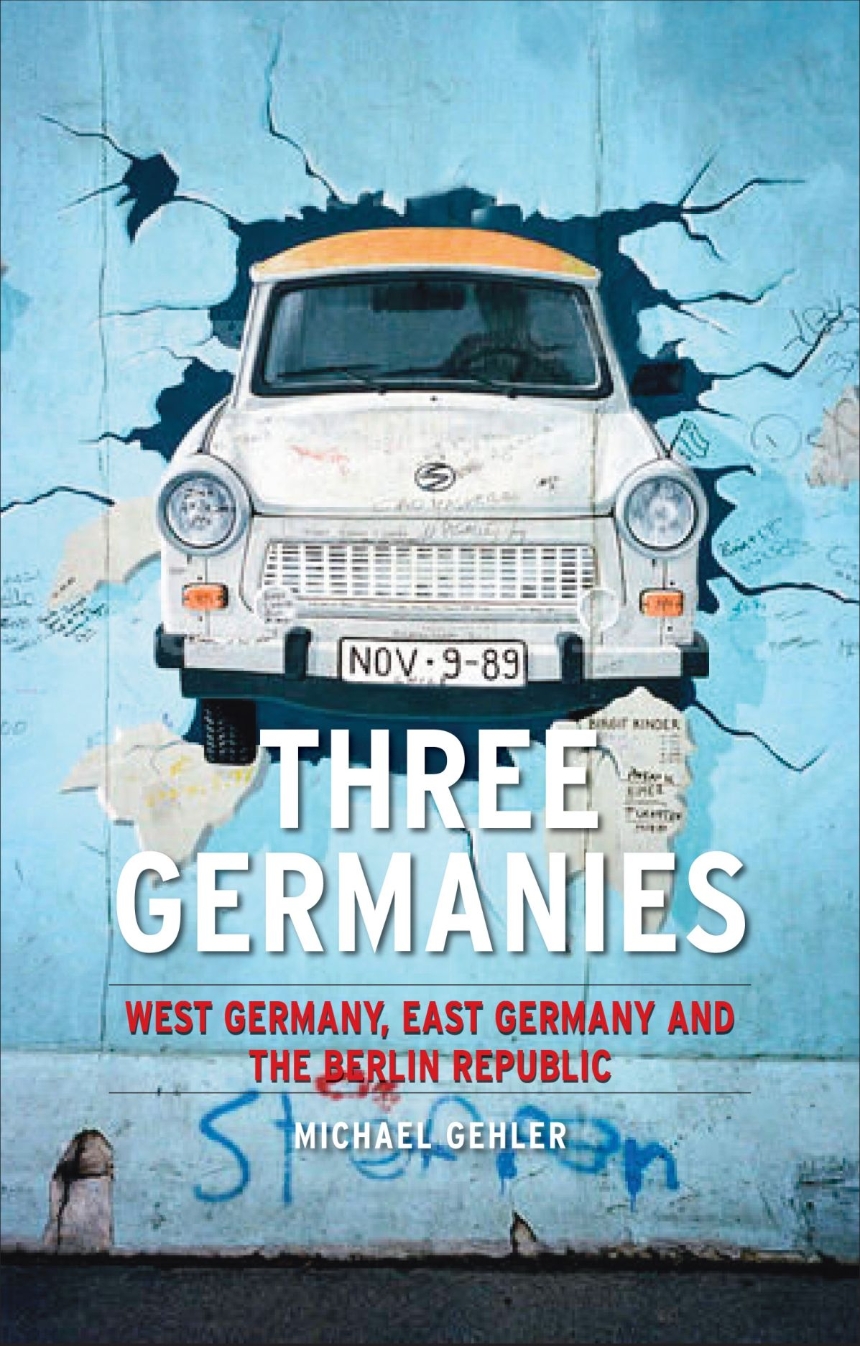Since the defeat of the Third Reich in 1945, Germany has been in a continual state of turmoil and reinvention. In Three Germanies, Michael Gehler explores the political rollercoaster Germany has been riding since the Yalta Conference, which split postwar Germany into separate zones controlled by the Soviets, Americans, French, and British. Peace, however, was short lived; from 1948 to 1949 Stalin blockaded Berlin in an attempt to gain control over the largest city in Germany. Though the blockade was finally broken in May of 1949, soon after, Germany was officially split into the Federal Republic of Germany, or West Germany, and the German Democratic Republic, or East Germany. From then on, Germany became two very different countries with opposite political ideals, splitting families down the middle ideologically—and soon physically, with the erection of the Berlin Wall in 1961.
Though the Berlin Wall came down in 1989 and Germany was reunified, its problems were far from over: to this day Chancellor Angela Merkel and the Grand Coalition struggle to implement reform. Gehler’s timely and relevant study will appeal to readers interested in postwar diplomacy and the future of Germany, as it examines Germany’s attempts to find a government and a leader that will create a stable and secure country in the twenty-first century.
Reviews
Table of Contents
1. Occupation and the Road to two Different German States
2. Partial Integration of the Federal Republic and the GDR Externally and Internally, 1949–55
3. The Two German States: Bloc Building in Central Europe, 1955–61
4. Germany as Two States, 1961–72
5. ’Change Through Rapprochement’: Détente and Normalization, 1972–9
6. New Confrontation, Disarmament and Erosion of the Defence Blocs, 1979–89
7. Return of the ‘German Question’ and the Unification of Germany, 1989–90
8. The Consequences and Burdens of Unity: Transformation, Stagnation and the End of the Kohl Era, 1990–98
9. The ‘Red-Green’ Coalition as a Half-way Experiment, 1998–2005
10. New Beginnings and Tradition: The Grand Coalition under Angela Merkel, 2005–9
11. Three Different Republics: Bonn–Pankow–Berlin, Attempt at a Summary
Abbreviations
Bibliography
Sources and Photo Acknowledgements
Index

